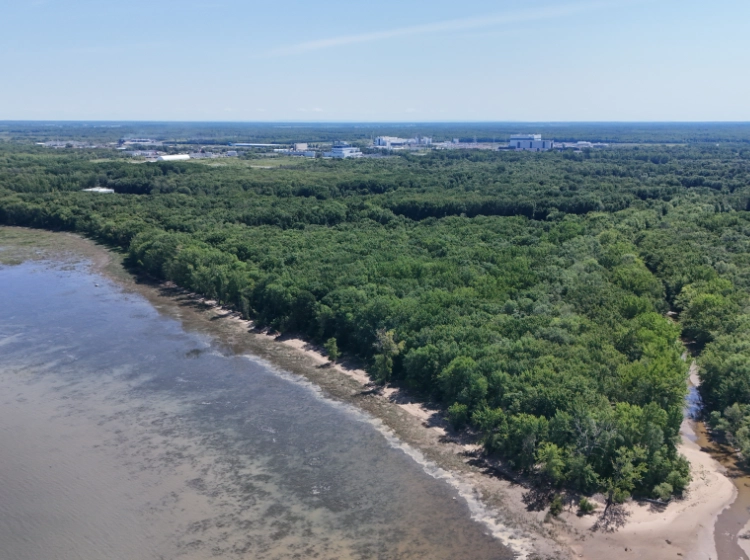
A voluntary initiative by the SPIPB

Dynamic and innovative, the Société du parc industriel et portuaire de Bécancour (SPIPB) already hosts several companies and is preparing to welcome new ones with the rise of critical and strategic minerals development projects in the region. Aware of the importance of preserving air quality, the SPIPB conducted a prefeasibility study in 2023–2024 and implemented a proactive approach to ensure sustainable and harmonious development of the Park.
The Ambient Air Quality Monitoring Program (AAQMP) evaluates the air quality in the surrondings of the SPIPB up to Champlain, with the goal of informing the public in the coming years. Sensors will continuously analyze the levels of atmospheric components present in the air to support social acceptability. An independent firm and laboratory will also examine the data and publish annual, simplified reports presenting the results.
Please note that the SPIPB is not authorized to issue a non-compliance notice following this monitoring, as this responsibility lies exclusively with the Government of Quebec.
The program focuses on monitoring different air quality parameters measured across the Bécancour Industrial and Port Park, specifically particulate matter with a diameter under 2.5 micrometers (PM2.5), under 10 micrometers (PM10), and metals.
Fine particulate matter, also called PM2.5, refers to particles present in the air with a diameter smaller than 2.5 micrometers (µm). They are generally a mix of smoke, soot, aerosols, or biological materials such as mold, bacteria, pollen, or pet dander. When inhaled, PM2.5 poses a health risk because these particles can penetrate deep into the lungs. Source : Infographic: What is fine particulate matter (PM2.5)? - Canada.ca
Their composition varies depending on their origin, the season, and atmospheric conditions. They notably contain:
According to the MELCCFP, they are the main component of smog in Quebec.
PM10 refers to particulate matter in the air with a diameter of 10 micrometers or less, including smoke, dust, soot, salts, acids, and metals. Particles may also form indirectly when gases emitted by motor vehicles and industries undergo chemical reactions in the atmosphere. Because PM10 particles are larger than PM2.5, they are less likely to enter the bloodstream, but they can contain several components, including metals. Source : https://www.iqair.com/ca/newsroom/pm10
Their composition varies depending on their origin, the season, and atmospheric conditions. They notably contain:
More than 28 metals will be analyzed in the laboratory, including:
Led by SPIPB, the Ambient Air Quality Monitoring Program is carried out in collaboration with several companies operating within the Bécancour Industrial and Port Park.














In the spirit of transparency and continuous improvement, SPIPB will publish annual results from the Ambient Air Quality Monitoring Program.
